Chandor Gardens, née White Shadows, a hidden gem in North Texas, part 1
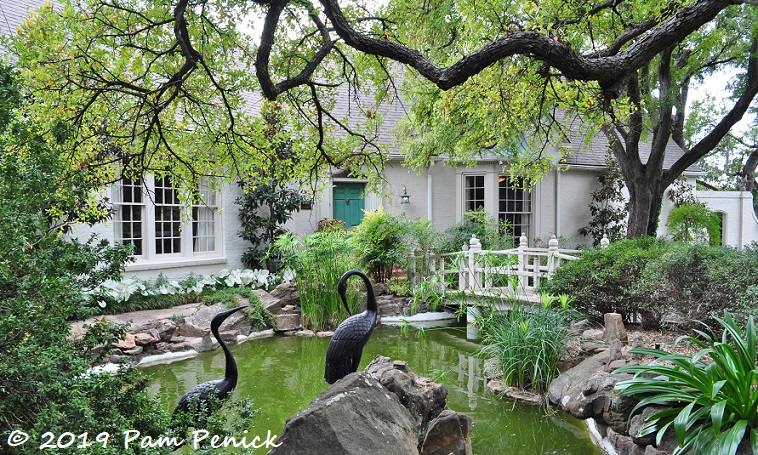
White Shadows — the name evokes romance and mystery — seems wholly appropriate for the dappled-shade garden surrounding a pale-gray house in the small Texas town of Weatherford, 30 miles west of Fort Worth. Here, in a series of alternately elegant and rustic garden rooms, you’ll find a green pond lapping near a robin’s-egg-blue front door, accessed via a Chinese footbridge; a sunken bowling lawn framed by stone walls and stately trees; a cliff-plunging waterfall and mossy grotto; a whimsical Chinese junk fashioned from stone that “sails” a small pond; and a grand staircase overlooking a spectacular dragon fountain and oval pool.
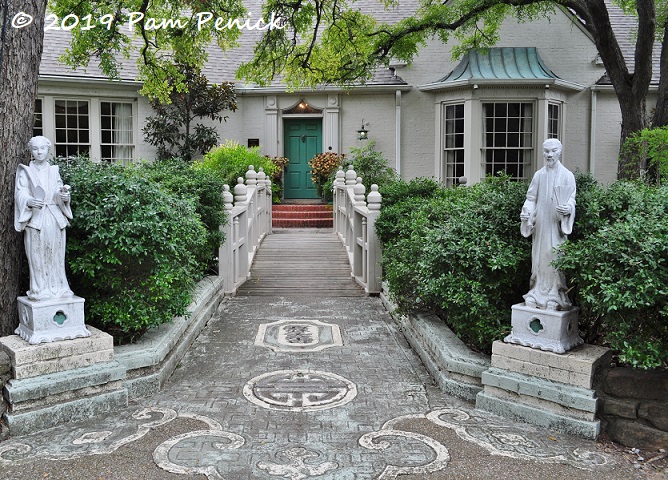
All was imagined and created, rather improbably, in the 1930s and ’40s in a scrubby North Texas cow pasture by English portraitist Douglas Chandor. He’d met Weatherford socialite Ina Kuteman Hill in New York City, and after their marriage they settled in her hometown, dividing their time between Texas and New York. They built a house on pasture land Ina’s family gave them, and Douglas spent the next 16 years building White Shadows, his dream garden.
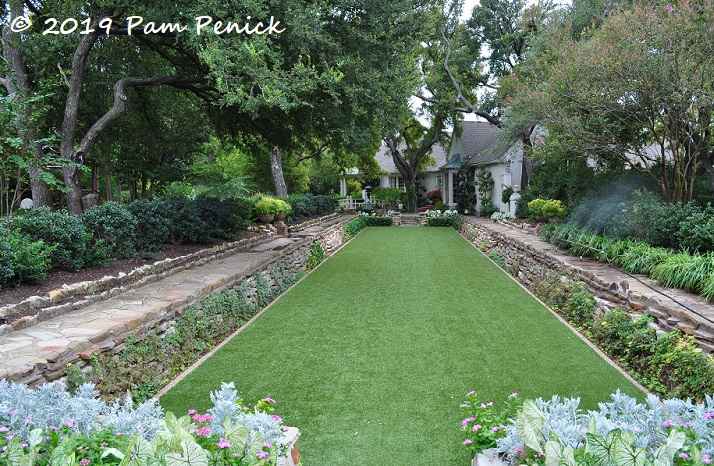
And what a dream it was. Merging English and Chinese garden styles, he turned 3-1/2 acres of cow pasture into beautiful garden rooms with long sight lines and strong focal points.
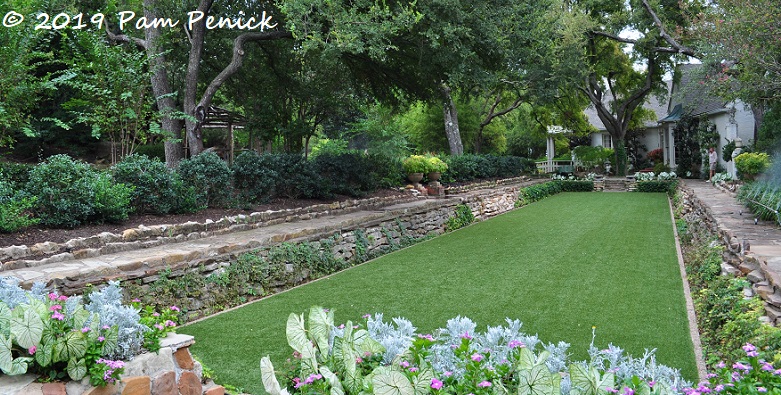
Douglas worked quickly, planting trees galore and building the garden room by room. He died in 1953, just 16 years after he’d started. Ina renamed the garden after her late husband and opened Chandor Gardens to the public. But following her death in 1978, the property was abandoned. Nature swallowed up the garden.
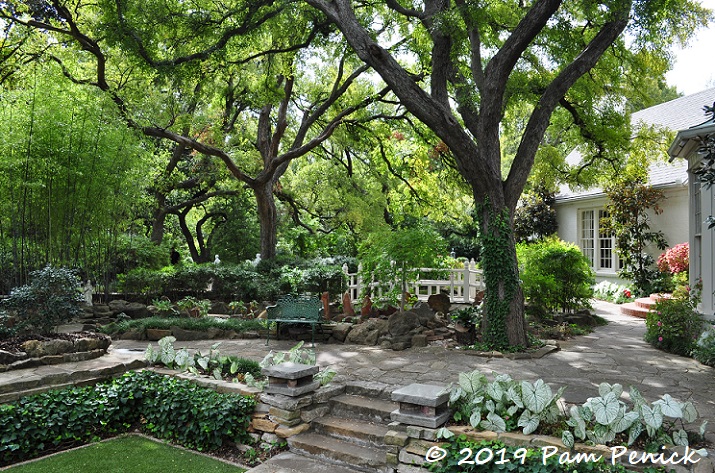
After 16 years of utter neglect, Chandor was resurrected by Melody and Chuck Bradford, who bought the overgrown, decrepit property in 1994 and painstakingly restored the home and gardens. Recognizing it as a local treasure, the City of Weatherford bought Chandor Gardens in 2002 and today operates it as a public garden. A foundation helps sustain it, and the garden’s online newsletter can be found here.
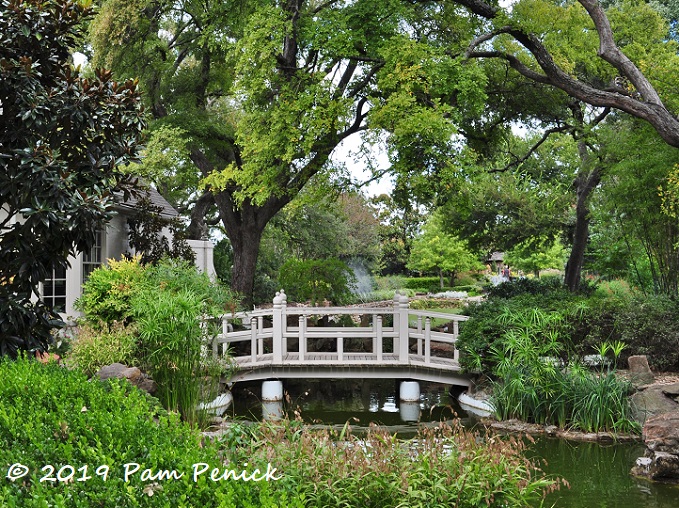
I visited Chandor Gardens in mid-October, detouring on the way home from a weekend in Dallas. Longtime Chandor horticulturist Steven Chamblee had offered me a private tour months ago, but by the time I was able to visit, he’d taken a new gig in East Texas. However, another Stephen, English-born horticulturist Stephen Haydon, had taken over and kindly agreed to show me around.
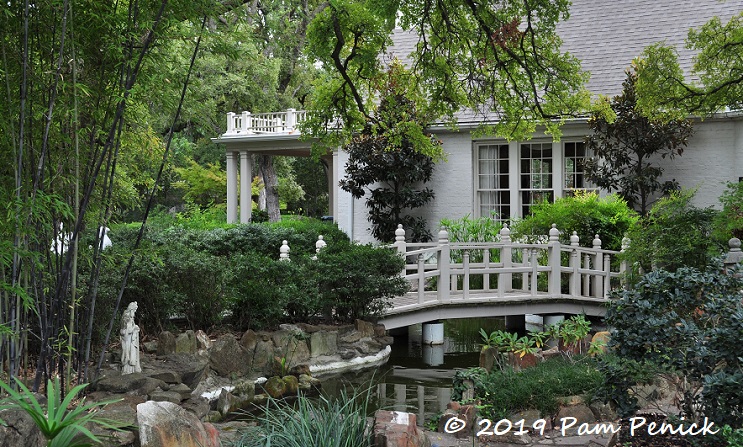
The Chinese-style bridge echoes the muted color of the house and reflects in the green pond.
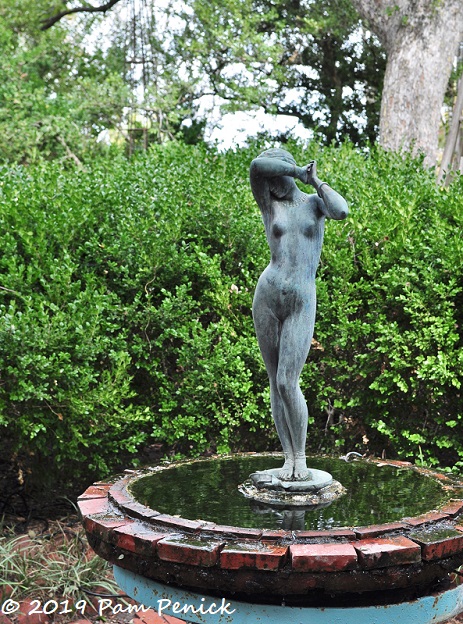
In a quiet nook enclosed by a boxwood hedge, a sculpture of a nude bather stands in a small fountain. According to Stephen, she was removed from Chandor Gardens at some point and returned years later.
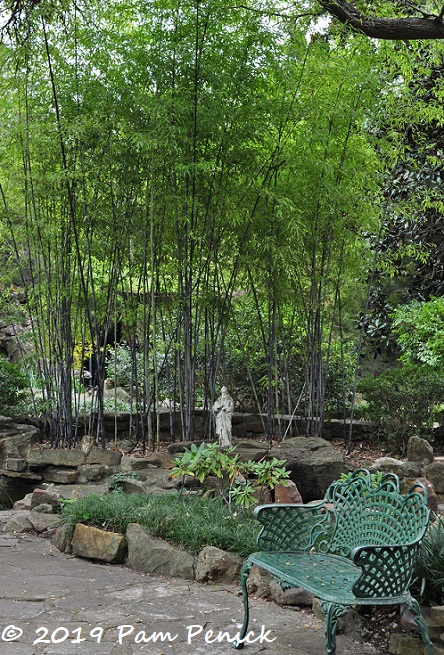
Black-stemmed bamboo makes a green scrim near a green lattice bench.
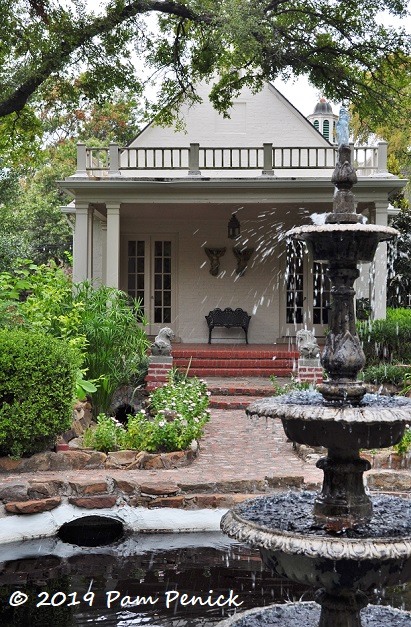
A tiered fountain splashes into a round pool, overlooked by a side porch.
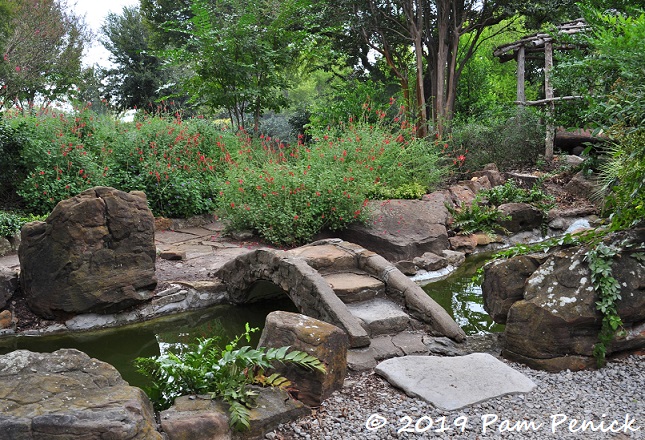
Walking along the stream that feeds the front-door pond, you come to a small moon bridge leading to flowering salvias and a rustic cedar gazebo.
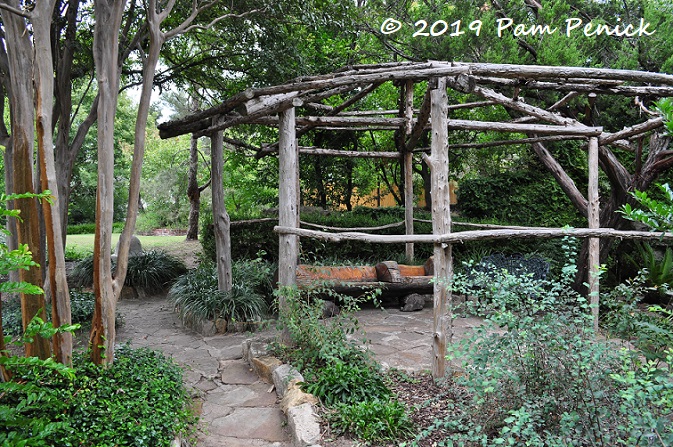
Under the cedar-pole roof, a chiseled log bench offers a spot to rest.
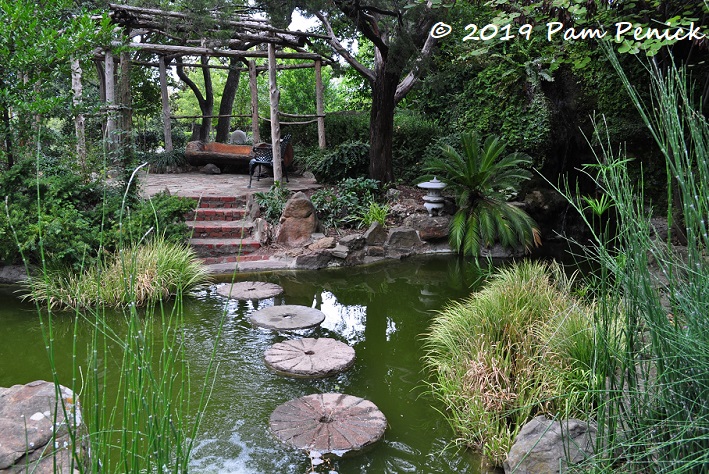
Millstones (perhaps reproductions) are repurposed as stepping stones across another pond. If you pause halfway across and look right…
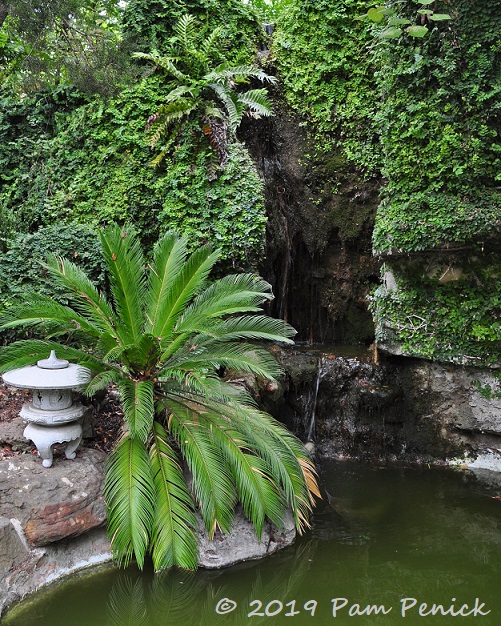
…you see a dripping cliff wall cloaked in greenery. A stone lantern and arching sago palm accent the naturalistic scene.
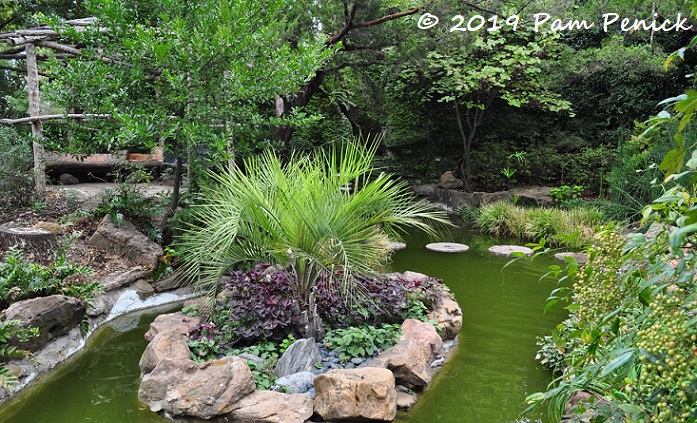
A palm gives a tropical look to an island in the pond.
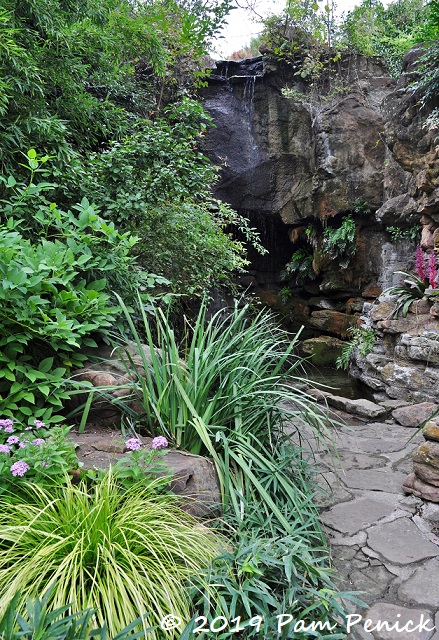
Douglas brought in masses of boulders to create what he’d name Mount Cox, for its benefactor. As the Parker County Master Gardeners Assoc. website explains:
“Many of Douglas’ subjects had their portraits painted at White Shadows, now Chandor Gardens. One of his subjects was James E. Cox, Governor of Ohio. While Governor Cox was here, he and Douglas became fast friends. Douglas told Governor Cox of his dream to build a mountain but felt he did not have the sufficient funds at that time to build it. When Governor Cox returned to Ohio, he mailed a letter with a check and said, “Build your mountain, fulfill your dream.” It was quite a feat, there are boulders weighing over 15 tons in the mountain. Douglas handpicked each boulder and rock from Palo Pinto County, the neighboring county to the west. Douglas would go out to various ranches and ask the owners if they would like to be rid of their rocks and of course, if you know anything about ranching, rocks are what they don’t want on their places. Douglas supervised the entire construction of the mountain.”
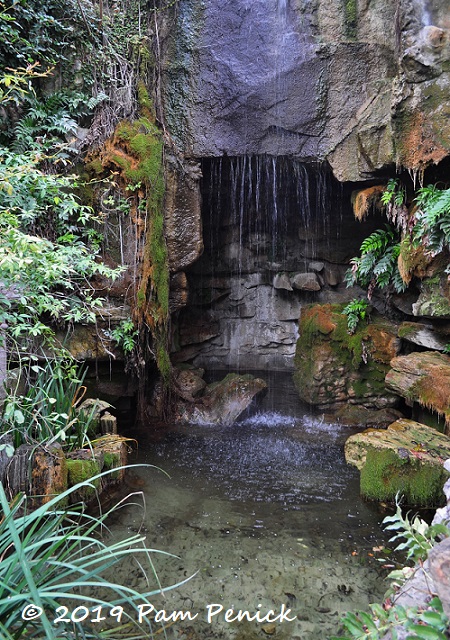
Mount Cox was completed in 1952, and Douglas died the following year, before he could add the waterfall he envisioned. Today, thanks to the efforts of the Bradfords, a waterfall flows down the cliff face, echoing natural spring-fed waterfalls found throughout Central Texas.
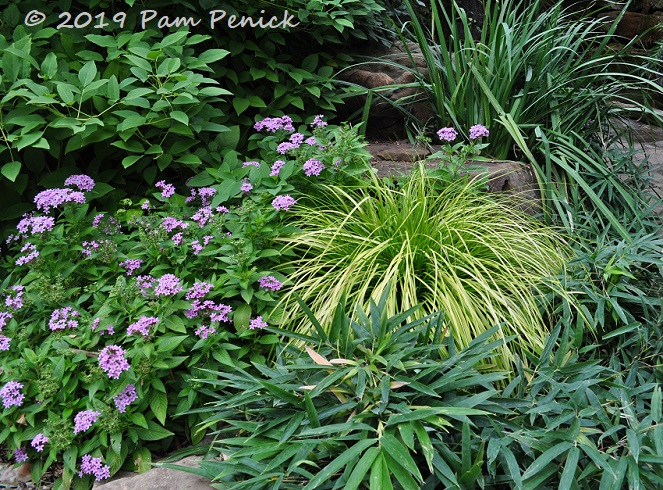
Pond-side plants
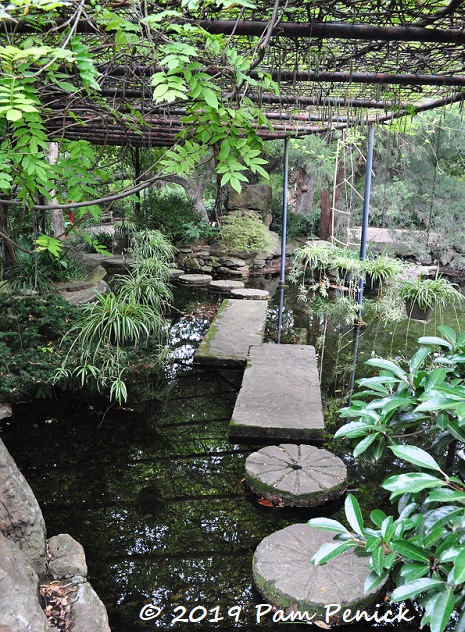
Yet another pond is traversed via millstone stepping stones and offset stone planks. Above, a metal arbor stands stork-like in the water, supporting a vine and hanging baskets of spider plant.
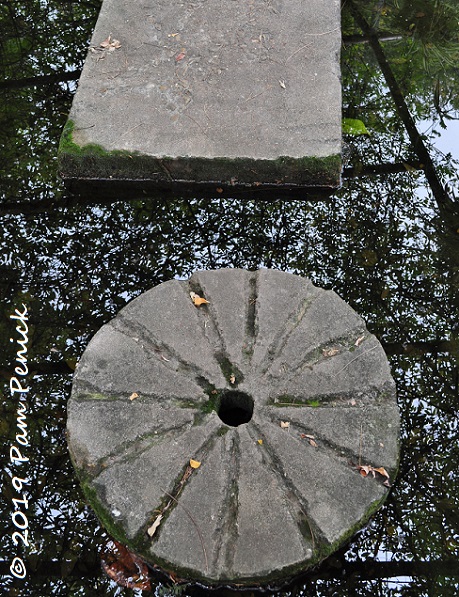
Crossing is a small adventure, and you must watch your step.
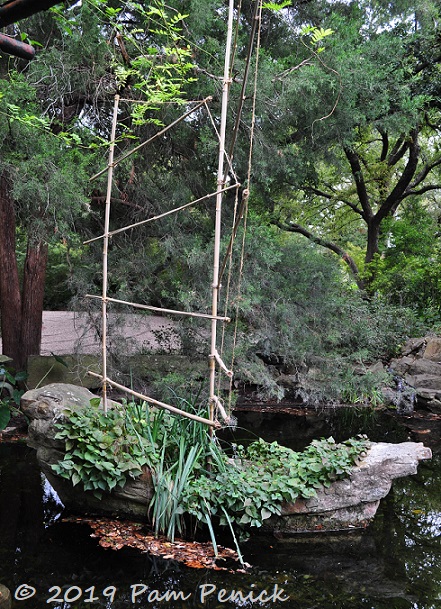
Douglas built a Chinese junk out of mortared stone, with a bamboo-pole sail — a whimsical illusion of a floating boat, which actually functions as an island planter.
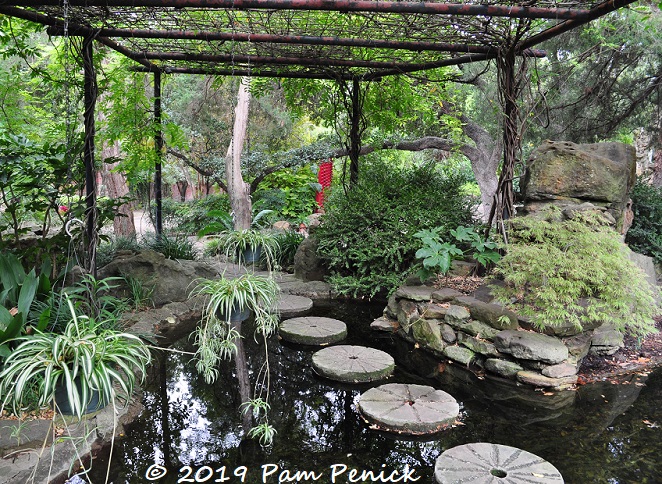
As you reach the other side you see a Chinese-red trellis in the distance. Let’s investigate!
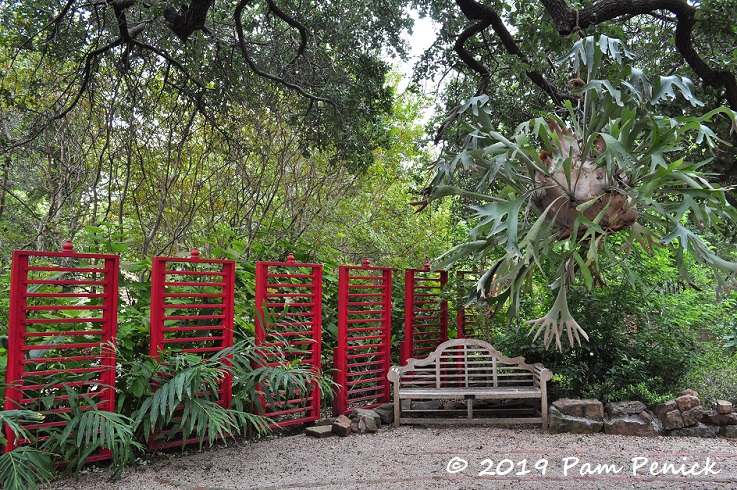
A red Asian-style screen against an abundance of green foliage creates an appealing contrast. Gigantic staghorn ferns hang from live oaks in the center of a gravel and brick courtyard.
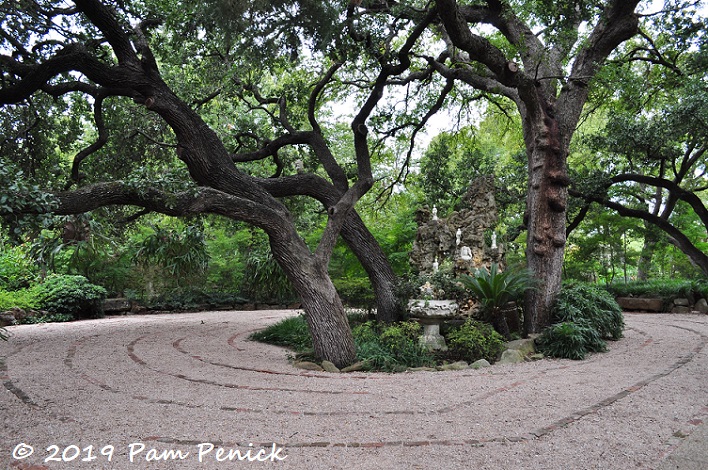
This was once a parking lot for visitors. But during Steven Chamblee’s tenure, he wisely banished the cars (there’s parking just outside the main garden entrance) and created this lovely labyrinth of bricks set in gravel under the live oaks. In the central tree well…
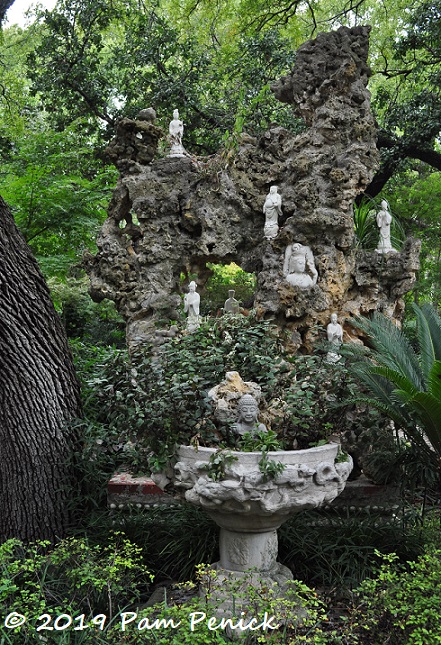
…stands a manmade scholar’s rock, constructed of mortared pieces of native karst limestone.
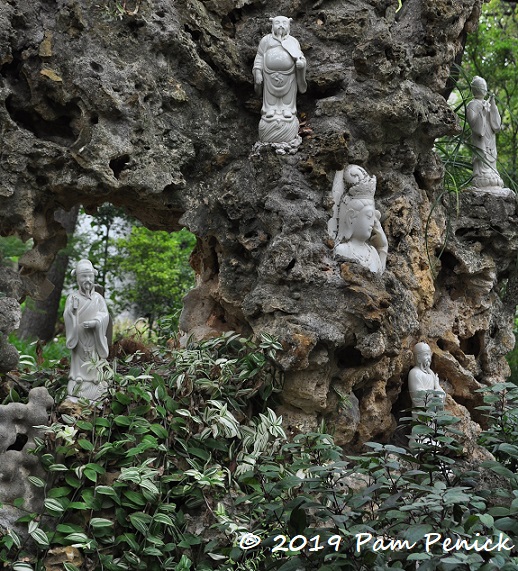
White porcelain Chinese figures occupy ledges on the rock.
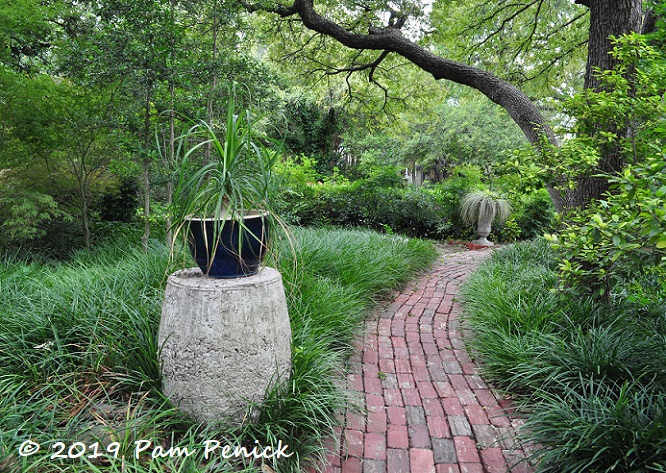
What I’ve shown here is only half of the garden. Stay tuned for part 2 of my Chandor Gardens visit to see the dragon fountain, moon gate, and entry courtyard.
__________________________
Digging Deeper
Come learn about gardening and design at Garden Spark! I organize in-person talks by inspiring designers, landscape architects, authors, and gardeners a few times a year in Austin. These are limited-attendance events that sell out quickly, so join the Garden Spark email list to be notified in advance; simply click this link and ask to be added. Season 8 kicks off in fall 2024. Stay tuned for more info!
All material © 2025 by Pam Penick for Digging. Unauthorized reproduction prohibited.


When I think of Texas, I don’t imagine gardens inspired by an Asian aesthetic but this was beautifully done!
There are actually a number of Asian-style public gardens in Texas, Kris, and I’m sure many more private ones. Even without lush foliage like the PNW enjoys, the boulder, pebble, water, and shrub aesthetic translates quite well to more rugged climates like ours. 🙂 Check out Fort Worth Botanic Garden and Taniguchi Japanese Garden at Zilker in Austin and (more loosely interpreted) San Antonio’s Japanese Tea Garden.
Lovely garden.
Look twice at the scholar’s rock……it’s a foo dog!
I read that later — how creative!
Certainly an unexpected garden for Texas but definitely a labor of love.
I can’t wait to show you the rest of it.
What an incredible and surprising garden….and you say there’s more!
Yes, and that post is now up. Look for the link at the end of this post, Gail.
This place is fabulous. It would be grand to be about to make a garden like this. I love the idea of a mountain. The Chinese junk is a great touch. The garden looks so lush. I can’t wait to see the next installment.
Douglas Chandor had a vision, didn’t he?